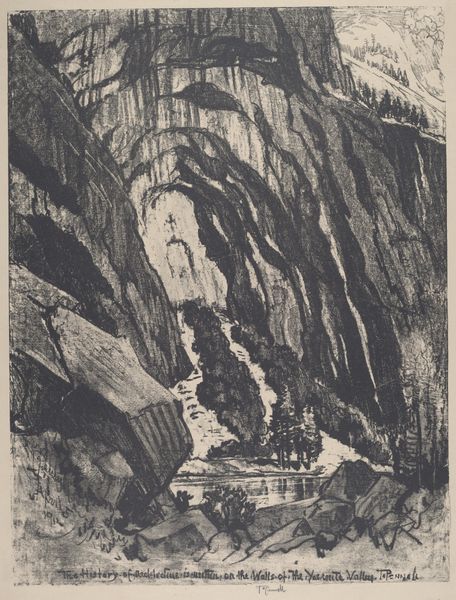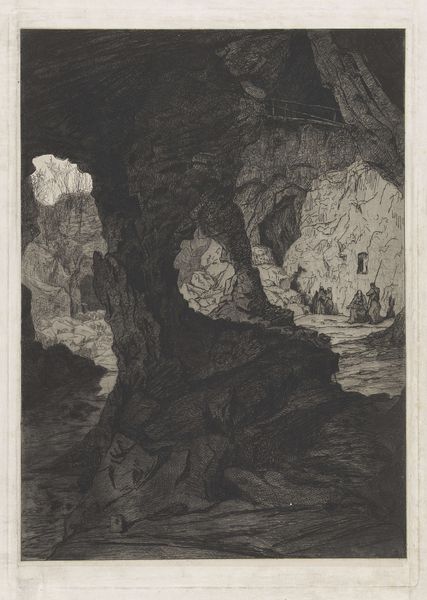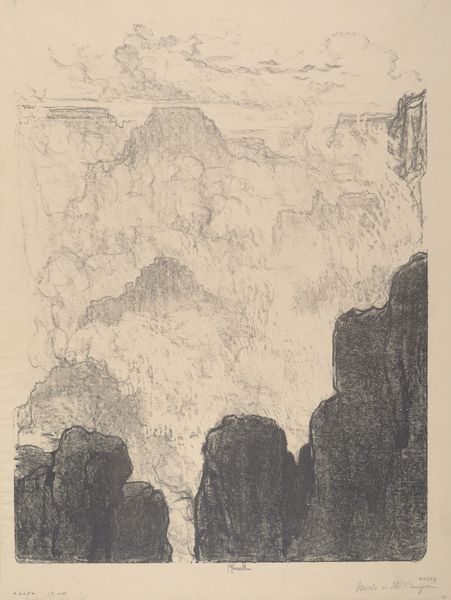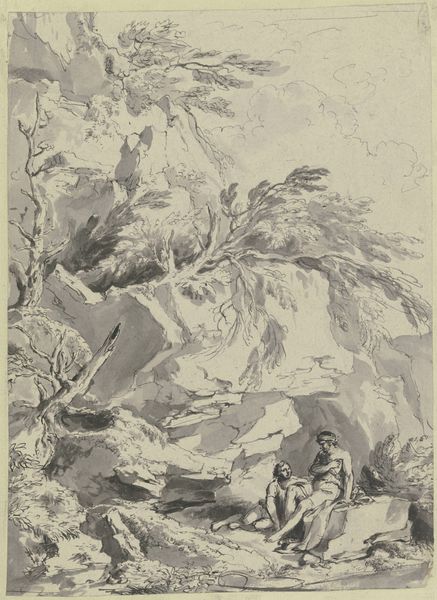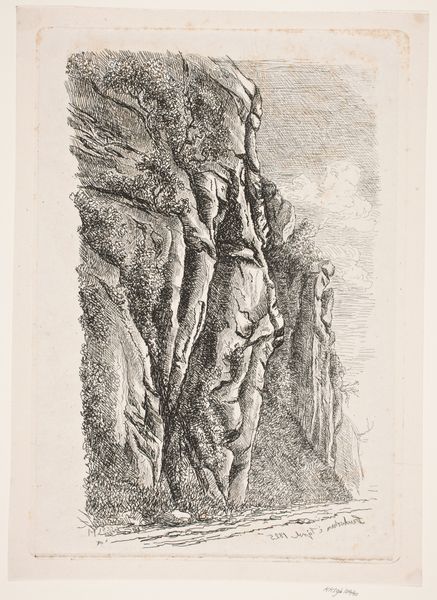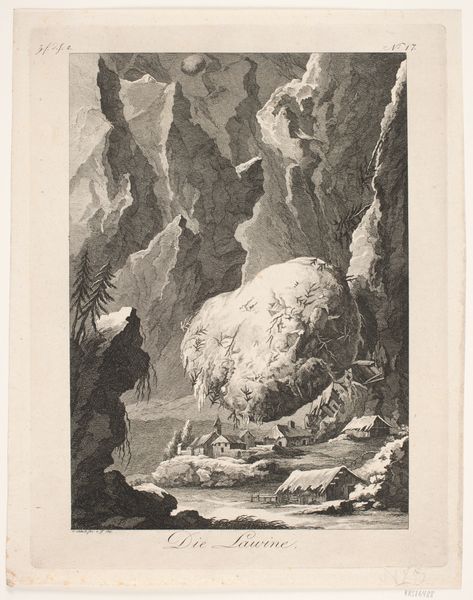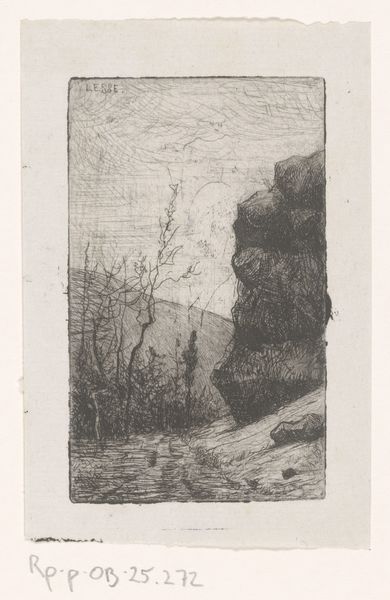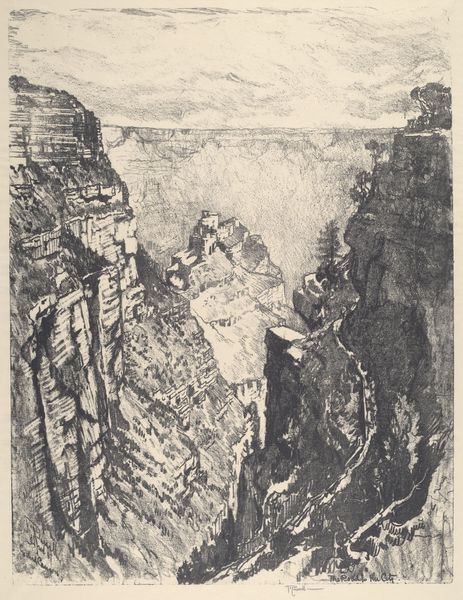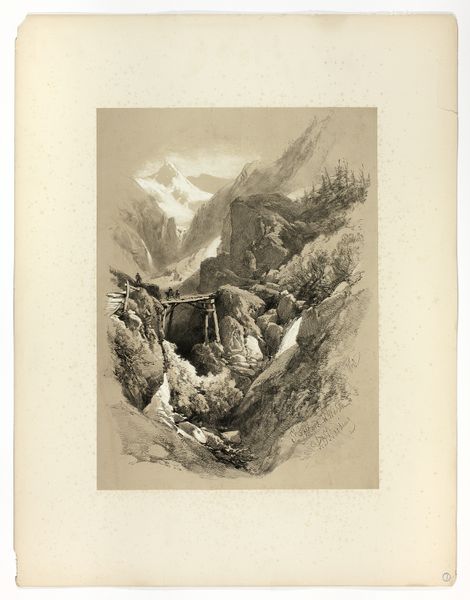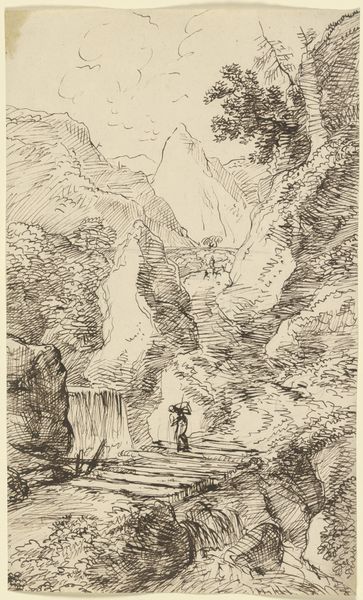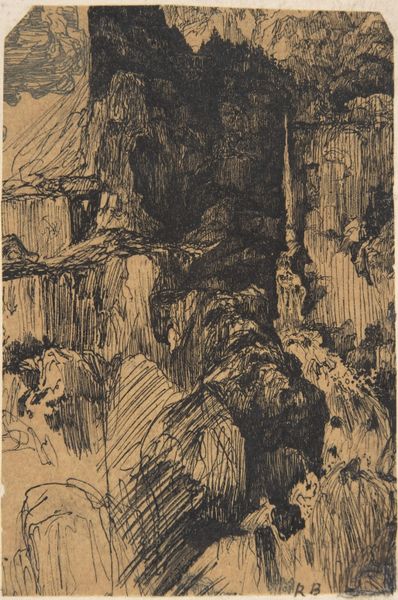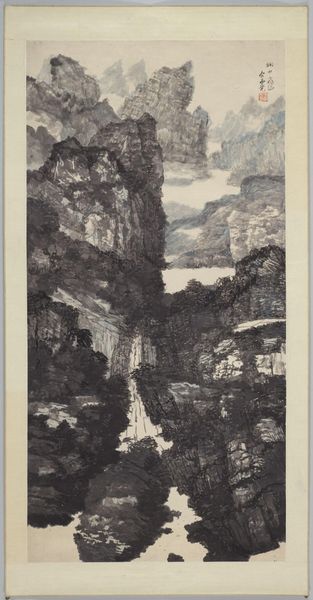
drawing, ink
#
drawing
#
landscape
#
figuration
#
ink
#
romanticism
#
line
#
realism
Copyright: Public Domain
Curator: Here we have Franz Kobell's "Steile Felspartie bei einem Bach," or "Steep Rocks by a Stream," created around 1795. It’s currently held at the Städel Museum. What are your first impressions? Editor: Brooding. There’s a sense of precarity conveyed through the rendering of these imposing rocks and the somewhat turbulent-looking stream below. The contrast between the solid forms and flowing water generates palpable tension. Curator: Indeed. The materials here are rather straightforward: ink on paper. But it's Kobell's use of line and wash that really captures your eye. He contrasts dense cross-hatching with areas of light wash, which gives the rocks their textured form. We have to remember, landscape wasn't merely about accurate representation; it was about eliciting an emotional response. Editor: Precisely! In the context of the late 18th century, especially with the rise of Romanticism, this work engages with ideas of the sublime – the power of nature to inspire awe, but also a certain level of fear. What social and economic shifts impacted the understanding and value assigned to the landscapes represented in art, during this time? Curator: I think the key lies in the increasing urbanization and industrialization. As more people moved into cities, the "natural" landscape became an object of longing, viewed as purer, more authentic than the increasingly manufactured world. The means of production were drastically changing. Landscape art like this actually allowed viewers to virtually return to that untouched space. Editor: And, of course, consider who these images were for. These were likely bourgeois landowners with their own shifting relationship to nature through resource extraction. Who were they, and who wasn’t welcome to commune with nature in this constructed idealized vision of "nature?" There is such an intersectionality in their status and experience. Curator: Good points to keep in mind. What I find interesting is the raw materiality. Ink isn’t as polished as other painting media; its starkness somehow suits the rough subject matter. It’s a perfect interplay of material, technique, and artistic vision. Editor: For me, this work demonstrates how deeply embedded the cultural meaning of the landscape is. Nature isn’t neutral territory. Curator: Agreed, it’s layered with political and social meaning. Editor: Seeing how it all comes together enriches my appreciation of this piece. Curator: Definitely! These converging ideas have reshaped my thinking about landscape's capacity to express not only nature, but us.
Comments
No comments
Be the first to comment and join the conversation on the ultimate creative platform.
